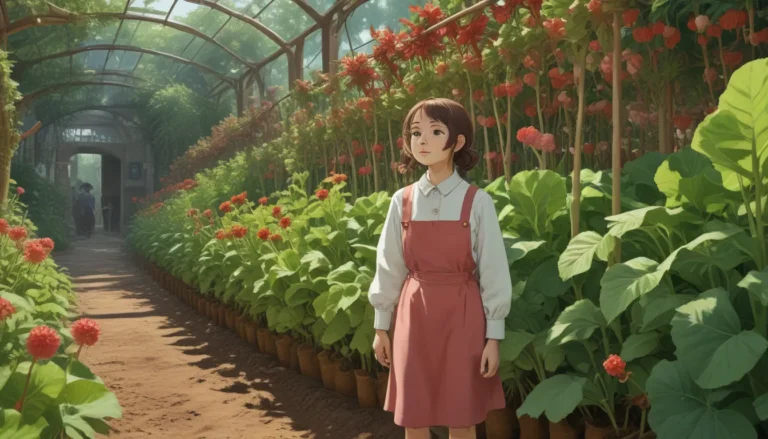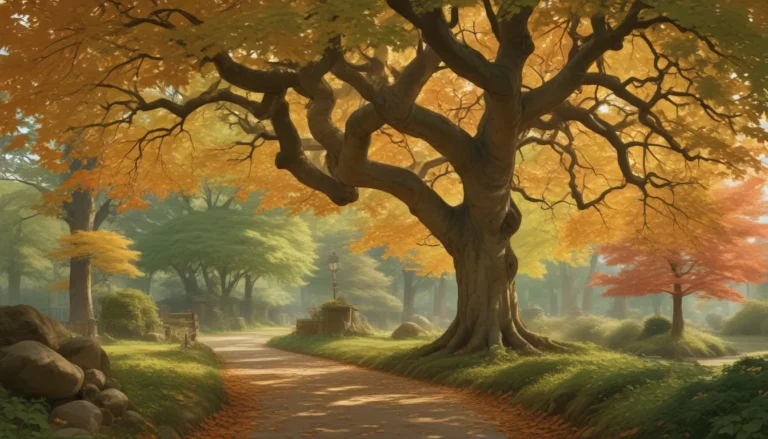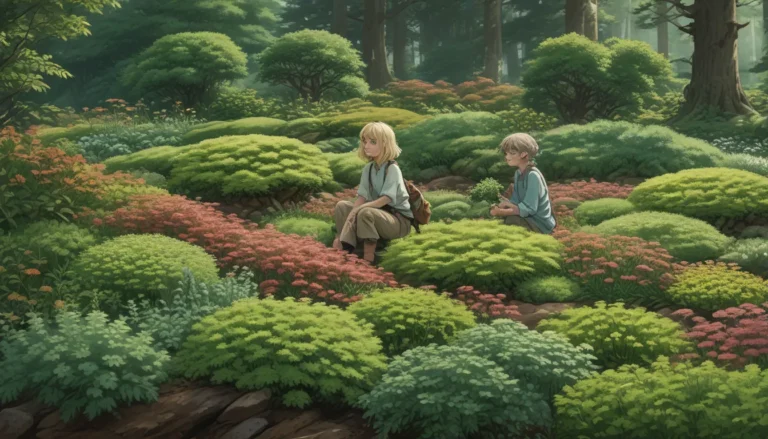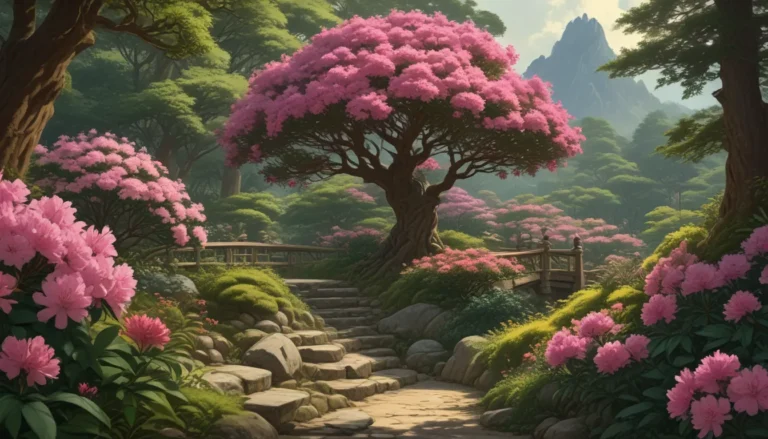Cultivating the Best Flowering Companions for Cosmos: A Comprehensive Guide

Have you ever wondered what the best flowering companions are for cosmos plants in your garden? Cosmos are delicate flowers that bring vibrant colors to your landscape. In this detailed guide, we will explore 19 different flowering companions that pair beautifully with cosmos. These plants share similar cultural requirements and make excellent garden companions. Whether you are looking to create mixed beds, borders, butterfly gardens, containers, or cutting gardens, these bloom buddies will add charm and beauty to your outdoor space.
Introducing Cosmos
Cosmos, Cosmos spp., is a summer-to-frost blooming flower in the Asteraceae family. With its cousins being the aster, chrysanthemum, coneflower, dahlia, and marigold, cosmos plants are a favorite among gardeners. Most varieties are annuals, but some can be perennial in specific zones. These lovely flowers are low-maintenance and thrive in full sun, making them an excellent choice for various garden settings.
The Advantages of Companion Planting
Companion planting is a smart way to garden. By selecting plants with similar sun, soil, and water requirements, you can ensure that your garden thrives. Pairing cosmos with the right companions not only enhances the visual appeal of your garden but also creates a balanced ecosystem that attracts pollinators and beneficial insects. In this guide, we will explore 19 flowering companions that complement cosmos and create a harmonious garden setting.
Color, Shape, and Texture: Key Considerations
When selecting flowering companions for your cosmos plants, consider color, shape, and texture. These elements play a vital role in creating a visually appealing garden design. Here are some tips to keep in mind:
- Color: Pair pink, purple, or white cosmos with flowers in similar shades for a cool color scheme. Complement bright orange, red, or yellow cosmos with boldly-hued companions. Mix cool and warm colors for an eclectic mix throughout your landscape.
- Shape: Mimic the rounded blossoms of cosmos with daisy-like blooms and vary or match the colors as desired. Add spikes of clustered blossoms for vertical interest and tubular forms to draw the eye into individual blooms.
- Texture: Match cosmos’ delicate quality with other dainty blossoms and airy foliage. Contrast the ephemeral quality with rigid spikes of blooms and darker, denser leaves. Mix flora varieties to display various textures, such as papery, feathery, ridged, and more.
Choosing the Right Companions
When selecting companions for your cosmos plants, consider the following factors:
- Size at Maturity: Consider the height and spread of companion plants to create a visually appealing garden design.
- Bloom Times: Plan for a season-long floral display by selecting companions with different bloom times.
- Cultural Requirements: Choose plants that have similar sun, soil, and water requirements to ensure they thrive together.
19 Flowering Companions for Cosmos
Here are 19 of the best flowering companions for cosmos plants:
- Bachelor’s Button
- Bee Balm
- Black-Eyed Susan
- Borage
- Cardinal Flower
- Dahlia
- Delphinium
- Dianthus
- Foxglove
- Globe Amaranth
- Hollyhock
- Larkspur
- Liatris
- Petunia
- Purple Coneflower
- Roman Chamomile
- Stock
- Sunflower
- Zinnia
Each of these companions offers unique characteristics and benefits that will enhance the beauty of your garden and create a stunning visual display.
Bachelor’s Button
Bachelor’s button, also known as Centaurea cyanus, is an annual that grows in various zones. The thistle-like blossoms come in a range of colors, including blue, pink, purple, red, white, and bicolor combinations. This summer-blooming companion is perfect for wildflower meadows and naturalized planting areas.
Bee Balm
Bee balm, or Monarda spp., is a perennial native plant with tubular, curved petals that bloom in the summer months. Colors range from lavender to red, adding vibrant hues to your garden. Bee balm is an excellent choice for meadows or drift companions as it readily naturalizes.
Black-Eyed Susan
Black-eyed Susan, a US native wildflower, is a short-lived perennial that blooms from summer to fall. The petal-like rays surround a prominent black or brown center disk, attracting beneficial pollinators. Consider planting en masse in cutting gardens, drifts, and meadows for a stunning floral display.
Borage
Borage, an annual herb with starry blue blossoms, is known for its self-sowing vigor. With a clumping growth habit, this plant is ideal for naturalized settings like drifts and meadows. Add borage to your garden for a touch of blue and white accents.
Cardinal Flower
Cardinal flower, with its upright red spikes, adds heat to mixed groupings and complements orange, red, and yellow companions. The rich color and feather-like form make it a popular choice for butterfly and cottage gardens.
Dahlia
Dahlia plants offer a varied palette of forms and hues, ranging from single-flowering anemone to double-flowering ball styles. With a broad selection of colors, dahlias are a favorite choice for mixed beds and anchor positions.
Delphinium
Delphinium plants make a striking vertical statement with upright spikes of blue, pink, violet, or white florets. Mass-plant them in cutting gardens or scatter them in drifts and meadows for a stunning visual impact.
Dianthus
Dianthus plants come in various species, including perennial, biennial, or annual varieties, suited for cultivation in different zones. Known for their flattened five-petal blossoms in shades of lilac, pink, red, and white, dianthus adds a spicy fragrance to your garden.
Foxglove
Foxglove, a biennial plant that blooms in the second year, offers elongated floret clusters in cream, pink, purple, red, white, and yellow shades. The tubular florets face downward, attracting beneficial insects and adding color and texture to your garden.
Globe Amaranth
Globe amaranth boasts rounded blossoms in a variety of colors, including lilac, magenta, orange, red, pink, purple, and white. With a mounding growth habit, globe amaranth adds movement and whimsy to cottage gardens, creating a vibrant display.
Hollyhock
Hollyhock plants bloom from summer to fall, offering a range of colors, including black, burgundy, peach, pink, purple, red, rose, yellow, and white. With mature heights ranging from three to nine feet, hollyhocks are ideal for anchor positions in garden beds.
Larkspur
Larkspur, an annual plant with upright spikes of blue, purple, pink, and white florets, resembles perennial delphinium. Enjoy mass-planting larkspur in cutting gardens or scatter them in drifts and meadows for a stunning visual display.
Liatris
Liatris, also known as gayfeather and blazing star, is a perennial plant with upright stalks and feathery florets in shades of purple, lavender, pink, or white. Use liatris as a dramatic punctuation in borders, drifts, and meadows for a striking garden design.
Petunia
Petunia plants offer a range of colors, including blue, coral, magenta, pink, purple, red, white, yellow, and multicolor combinations. With mounding and spreading growth habits, petunias are versatile plants that perform well in containers, beds, and borders.
Purple Coneflower
Purple coneflower plants feature daisy-like flowers with pinkish-purple rays surrounding a cone-like center disk. Attracting pollinating insects, purple coneflowers are ideal for specimen planting in beds and borders and mass-planting in drifts and meadows.
Roman Chamomile
Roman chamomile, a perennial herb, is ideal for front-of-bed and border placements. With a low-profile growth habit, chamomile blooms from summer to fall in shades of white. Use Roman chamomile as a ground cover to inhibit weed growth and add visual interest to your garden.
Stock
Stock, a late spring to early summer cottage garden classic, comes in shades of apricot, lavender, pink, purple, red, white, yellow, and multicolor combinations. With multi-petaled and loosely arranged florets, stock plants are ideal for beds and borders, adding color and interest to your garden.
Sunflower
Sunflower plants bloom from spring to early fall in vibrant yellow or red hues. With daisy-like flowers that can be as large as saucers, sunflowers range in height from one to 12 feet tall. Plant sunflowers as back-of-bed anchors or standalone specimens for a bold visual impact.
Zinnia
Zinnia plants offer an array of colors and multicolor combinations with double, semi-double, or single ruffled or smooth petals. With mounding growth habits, zinnias are versatile plants that look lovely in beds, borders, drifts, and meadows.
Designing Your Garden
As you plan your garden, consider the color, shape, and texture of your plants. Think about height, bloom times, and placement to create a visually appealing landscape. Alternate short and tall specimens for undulating borders and space plants generously to accommodate mature dimensions without overcrowding. Envision your garden from spring to frost with a variety of flowering plants to delight you and visitors to your home.
Companion planting is a smart way to enhance your garden. By selecting plants that share similar cultural requirements, you can create a balanced ecosystem that attracts pollinators and beneficial insects. When planting cosmos, consider these 19 flowering companions to create a stunning visual display in your outdoor space.
Conclusion
In conclusion, companion planting is a valuable gardening practice that can enhance the beauty and functionality of your garden. By selecting flowering companions that complement cosmos plants, you can create a harmonious garden setting that attracts beneficial insects and pollinators. These 19 flowering companions offer a diverse range of colors, shapes, and textures that will complement the delicate beauty of cosmos flowers. Whether you are creating mixed beds, borders, or butterfly gardens, these bloom buddies will add charm and vibrancy to your garden. Happy planting!





